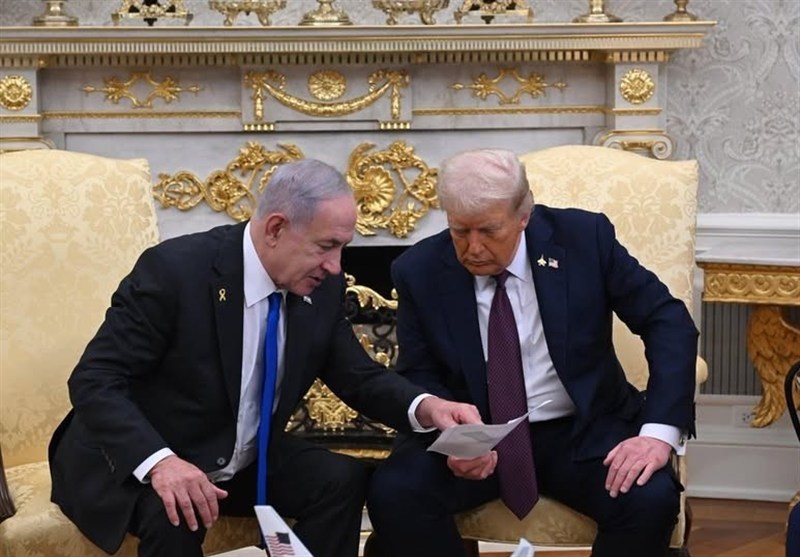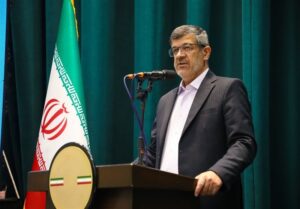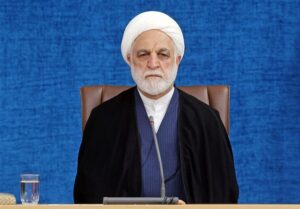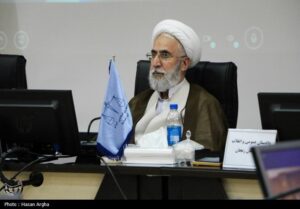According to the Tasnim news agency’s media group, less than a week after the Sharm el-Sheikh International Show was held in Egypt and the aforementioned meeting was portrayed as a turning point in regional developments (Trump called it the beginning of solving the 3,000-year-old problem in the region!) and the beginning of the peace and convergence process in the Middle East, whispers are heard about the failure of Trump’s 20-point plan; An incident that was previously pointed out by a number of regional observers citing the historical practice of the Zionists.
During the recent decades and since the conclusion of the first Security Council resolution in March 1948 (Resolution 42) on the separation of the Palestinian territories until today, the Zionist regime has a long history of non-commitment and disobedience to laws, international treaties and bilateral or multilateral agreements. Since the Oslo Accords in 1993, many agreements such as Wadi Araba, Gaza-Jericho, Annapolis, road map, King Abdullah’s peace plan and wide resolutions regarding settlements, the return of displaced persons, the status of Jerusalem, etc. have been raised with the issue of resolving hostilities in the region; Plans that have either been ignored by the Zionists or the Israeli authorities have tried to get critical points and have refused to realize and implement the promises of the loan. The conclusion of the ceasefire agreement with Hezbollah in November 2024 is considered to be one of the latest examples of the failure of the Zionists’ promise, in which the occupying army continued to occupy 5 focal points in the south on a daily basis and in violation of the provisions of the ceasefire, carried out drone and rocket attacks on resistance positions in southern Lebanon.
The military doctrine of the Zionist regime underwent a fundamental change after the 7th of October, and unlike the previous years, which sought to marginalize the issue of an independent Palestinian state by forcing the Arabs to join the reconciliation process, at the current stage, relying on the policy of imposing peace through power, it aims to impose its ideal on neighboring and surrounding countries. Based on the aforementioned doctrine, the domination of all Palestinian lands (from the sea to the river) and the creation of buffer zones to ensure the strategic depth of this regime are on the agenda. The final policy of the Zionists – as Netanyahu has acknowledged in one of his recent positions – is based on the formation of “Greater Israel”, so the idea of the continuation of the ceasefire in the Gaza Strip seems a little crude.
The acceptance of Trump’s 20-point plan from the beginning was accompanied by the displeasure of some spectrums in the occupied territory, however, the acceptance of the mentioned plan can be evaluated within the framework of the system of meeting the basic needs of Tel Aviv; A point of view in which, after achieving the basic and key demands of the Zionists (despite the inevitable flexibility), the way will be paved for the final path; A process that has already been followed in Lebanon, Yemen and Iran, and despite the end of the first phase of the conflict, the political-military officials of the Zionist regime have spoken about the impending secondary attacks on the sides of the resistance axis. For example, in Lebanon, after withdrawing from the Litani River and accepting the ceasefire and stopping Hezbollah’s missile attacks, the Zionist army has continued its scattered attacks to the south during the ceasefire and has taken steps to find an excuse to attack this area again.
In relation to the developments in Gaza, the issue is of double sensitivity. The neighborhood of this strip with the occupied territory and the idea of forming an independent Palestinian state affected by the developments in this region have forced the extremist leaders of Tel Aviv to disregard the provisions of Trump’s proposed plan and resort to false excuses in the direction of restarting attacks on this strip.
In this article, we are going to discuss the series of factors and variables that are effective and encourage the development of the mentioned plan.
1- A problem called handing over the bodies of Zionist prisoners
Although the Hamas movement looked at Trump’s proposed plan with suspicion and if it were not for the comprehensive pressures of Turkey, Qatar and Egypt, it would undoubtedly oppose some clauses of Trump’s proposed plan, but from the very beginning it stated that tying the first phase of the ceasefire to the complete delivery of the bodies of the Zionist prisoners in a short period of time seems far-fetched, because the dead prisoners are buried in different places and apart from limited facilities. In order to find them, Hamas is part of the mentioned areas under the occupation of the Zionist enemy.
Now, despite the release of all the living prisoners and most of the bodies of the dead, the Zionist circles have taken steps to undermine the agreement by insisting on Hamas’ complete non-compliance with the terms of the agreement and the complete delivery of the bodies. Throwing stones in the way of goods and trucks carrying humanitarian aid and preventing the complete reopening of the Rafah crossing, along with the failure to release some of the Palestinian prisoners, are among the disruptive actions of the Zionists.
According to a number of regional observers, the Zionist regime intends to marginalize the implementation of the clauses of the agreement under the above-mentioned pretext and attack this group again. In a tweet, Bezalel Smotrich, the regime’s finance minister, pointed out the failure of Hamas to fulfill its obligations to return the bodies and wrote: “Only military pressure will return the bodies of prisoners.”
2- Ambiguous topic: Hamas weapons
In the text of Trump’s proposed plan, it is stated that Hamas should be completely disarmed. However, based on published reports, Hamas has announced that it has refused to hand over its light weapons and will jointly provide semi-heavy weapons to the Palestinian Authority, other Palestinian groups, and the Egyptian side. This can be considered a pretext for disrupting the agreement by the Zionist and American parties.
The Zionist authorities and Trump himself have stressed the necessity of disarming Hamas and threatened that if Hamas does not agree, they will achieve this goal by resorting to military tactics. Referring to Trump’s recent statements, the Prime Minister of the regime clearly declared: “As President Trump said, if Hamas is not disarmed, we will start hell.”
3- Smoothing the annexation projects of the Gaza Strip and the forced migration of Palestinians
Since Trump’s assumption of power in the White House and his idea of turning the Gaza Strip into the region’s riviera, the policy of forced migration of Palestinians and annexing the Gaza Strip to the occupied territory has become one of the key military goals of the Zionist regime. That is why the ultra-orthodox wing of the Zionist cabinet, such as Smotrich, Amihai Eliyahu, and Benguir, have openly opposed Trump’s plan and called it a violation of the fundamental goals of the Zionists, and have threatened Netanyahu that if Hamas continues to be present in Gaza, they will topple his coalition government.
It is conceivable that Netanyahu, in order to maintain the support of the extreme ethnic-religious faction and to fulfill the hopes of the Zionists regarding the realization of the two aforementioned principles, resorting to false pretexts such as Hamas weapons, will take a step towards attacking the Gaza Strip again.
4- The realization of the dream of a great Israel
In the middle of the war, the Prime Minister of the Zionist regime emphasized the necessity of realizing the idea of ”Greater Israel” in a speech citing the Torah; This brought the formation of the Jewish state from the Nile to the Euphrates to the public mind of the region and was accompanied by a sharp reaction from a number of Arab leaders and diplomats.
The fall of Bashar al-Assad’s government in Syria created a good opportunity for the Zionist army to take advantage of the internal tensions in Syria, while maintaining the occupied Golan Heights, to occupy the Hermon Heights and by supporting the separatist Druze militias on the way to the partition of Syria, to launch the David Corridor, to impose a no-fly zone in southern Syria and to create a buffer zone next to the occupied territory and to solve the historical problem of the strategic depth of the Gam regime. take away
The geographical location of the Gaza strip and its proximity to the Zionist regime and the Sinai desert have made the realization of the dream of greater Israel and taking steps on this path in the western front, require the expulsion of the Palestinians and the occupation of this strategic area by the Zionists. It is worth noting that the fundamental step in the path of greater Israel is firstly in establishing the claim of mastery over all the Palestinian lands from the sea to the river.
5- Playing the role of self-governing organizations in the future of Gaza
The text of Trump’s proposed plan explicitly mentions the role of the Palestinian Authority in the political future of the Gaza Strip as the legitimate representative of the Palestinians, however, a number of senior Israeli officials have strongly opposed it. In a clear statement, the Prime Minister of the Zionist regime declared: “None of the officials of Hamas or the Palestinian Authority will govern Gaza.”
According to the leaders of Tel Aviv, the Palestinian leadership in the Gaza Strip will keep the idea of an independent Palestinian state in their minds like a bone in a wound. Therefore, in order for the mentioned plan not to be implemented, it is necessary that either this strip be completely occupied by Israel or be placed under international management, and the realization of any of the two goals requires a new war in this strip.
6- Ambiguity about the withdrawal of the Zionists from the Gaza Strip
Trump’s proposed plan explicitly refers to the gradual and multi-stage withdrawal of the Zionist army from the Gaza Strip (with the exception of some designated areas). However, the complexity of the said plan, its multi-stage nature and the ambiguous points in the plan have provided a suitable platform for non-compliance with the provisions of the agreement. Hebrew sources recently claimed that Tel Aviv has informed Washington that it intends to keep the forces of the Zionist army in 3 places in the Gaza Strip, including the Salah al-Din crossing and the buffer zone, for several years. The important axis of Philadelphia (the border between the Gaza Strip and Egypt) is mentioned as another area from which the Zionist side has announced that it will refuse to withdraw.
Other retreats of the Zionist army on the way to the realization of the second part of the agreement were also kept silent under the pretext of not handing over some bodies, and the Zionist military has taken steps to provoke the anger of Hamas by attacking the positions of Hamas forces in several stages.
7- Ensuring Netanyahu’s survival at the head of power
Netanyahu’s political life during the last 2 decades is tied to the creation of political-security crises. Judicial challenges and extensive political criticism have brought the Prime Minister of the Zionist regime to a point of no return. The importance of the mentioned issue is such that Trump, during his speech in the Knesset, asked Isaac Herzog, the president of the Zionist regime, to use the presidential amnesty card for his release.
Netanyahu’s track record shows that the Prime Minister of Israel has taken a step towards creating a crisis in the region in order to get rid of all-round pressure and postpone the judicial process, along with trying to get double gains. According to him, the renewed attack on the Gaza Strip and the attempt to annex this strip will provide a suitable opportunity to sway the public opinion of the occupied territory in the direction of him and his party in the upcoming 2026 elections, while suspending the judicial court.
* Conclusion
Despite the desire of the Zionist leaders to complete their final project, the attack on the Gaza Strip, especially after the release of the Zionist prisoners, will impose an indescribable cost on the Zionist regime in the international community and the public opinion of the world. In addition, the initial withdrawal of the Zionist army from some areas has strengthened the military position of Hamas in this area. However, it cannot be hidden that the idea of re-attacking this line, which is tied to Netanyahu’s personal ambitions and the apocalyptic ideas of extreme Zionists and a number of evangelical Christians, continues to be reviewed daily in the minds of the ruling leaders of Tel Aviv; An issue that can take the path of developments in the region in a different direction, contrary to the intentions of the extremist Jews.
Source: Watan Moroz
end of message/
منبع:تسنیم







